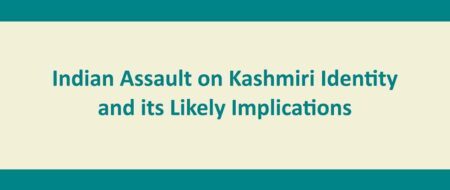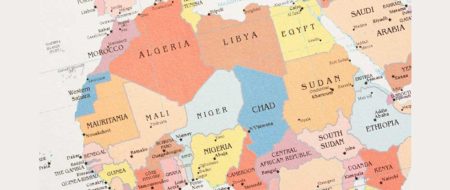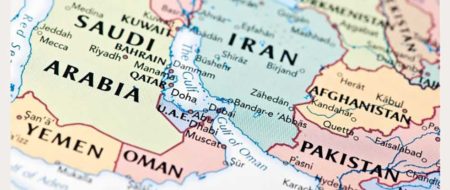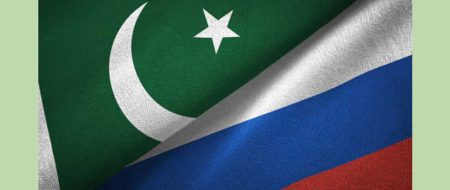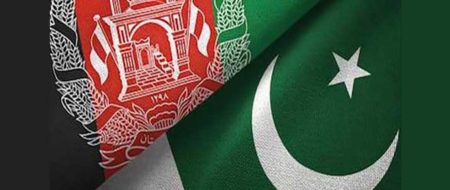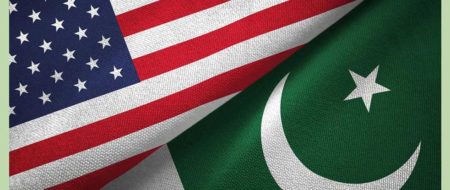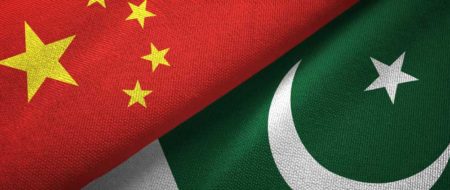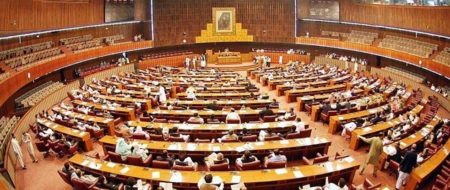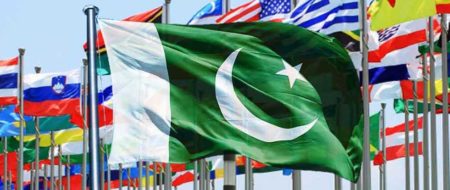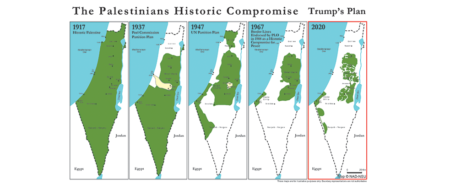Elections in Indian Held Kashmir and the Kashmir Dispute
2008 state assembly elections in IHK have generated several significant issues that have relevance to the future dispensation of the Kashmir issue
Policy Perspectives , Volume6 , Number2, July – December 2009
Abstract
[Every election in Indian Held Kashmir (IHK) has had its own dynamics and political environment. The assemblies were formed and worked regardless of whether they enjoyed any support from the public, and whether the ruling party had any legitimacy or moral grounds for its rule. The eleventh state assembly elections in IHK which took place in November-December 2008 have generated several significant issues that have relevance to the future dispensation of the Kashmir issue and the politics in the state. The implications of the moderately high turnout in the polls are heavily debated, with some quarters even construing it as the erosion of the mass support base for the valley’s freedom movement and the acceptance by Kashmiris of the status quo. However, the protests lodged in the valley by thousands of people chanting anti-India and pro-freedom slogans following the Amarnath Shrine crisis in 2008 and the Shopian tragedy in May 2009 emphasized the fact that freedom sentiments are not only alive in the valley but have been transferred to the fourth generation of Kashmiris since the Indian occupation. Therefore, the history of elections in IHK guides that elections will neither be accepted by the people of Jammu and Kashmir as a substitute to the right to self determination or plebiscite, nor pacify freedom sentiments in the valley. – Editors.]
Introduction
In November-December 2008, the eleventh round of elections, comprising 87 seats, was held in Indian Held Kashmir (IHK). Although elections in this disputed area, which consists of the Kashmir Valley, Jammu and Ladakh regions 1, have always been a focus of world attention, the circumstances and turnout of the 2008 elections gave them added significance.
Indian officials tend to present elections in IHK before the international community as a touchstone for gauging the current trend and vigor of the freedom movement in the valley and for projecting future political developments. Following the 2008 elections, India claimed in the United Nations (UN) that the peaceful conduct of elections was an indication of the consent and acknowledgement of the people of Jammu and Kashmir regarding Kashmir’s accession to the Indian union.2
Voter turnout in the 2008 elections 3 was higher than analysts had expected. The elections were held in the backdrop of an unprecedented mass uprising in the wake of the Amarnath yatra controversy4 . Most observers had projected that elections would either be postponed or, if they were held, voter turnout would be minimal.5 However, the elections were held according to the stipulated schedule and a large number of people exercised their right to franchise, contrary to previous elections,,6 in which successful boycott campaigns had kept voter turnout very low.
The high voter turnout was interpreted by some quarters, including even the Indian National Congress President Sonia Gandhi, as proof that the freedom movement in Kashmir had lost impetus.7 The question arises whether the election results, or for that matter the conduct of the 2008 elections, really signify that support for freedom has decreased.
This question is examined in this paper based on a consideration of the historical dynamics of the Jammu and Kashmir (J&K) state assembly elections, the environment and manner in which the 2008 elections were held, and an analysis of the implications of the elections’ results and aftermath.
Historical Background of the J&K Elections
J&K Elections Results, 1951–2008
| Political Party |
1951 |
1957 |
1962 |
1967 |
1972 |
1977 |
1983 |
1987 |
1996 |
2002 |
2008 |
|
Total Seats |
75 |
75 |
75 |
75 |
75 |
76 |
76 |
76 |
87 |
87 |
87 |
|
National Conference |
75 |
68 |
70 |
8 |
** |
47 |
47 |
40 |
57 |
28 |
28 |
|
Congress |
__
|
__ |
__ |
61 |
58 |
11 |
26 |
26 |
7 |
20 |
17 |
|
Janta Party |
__ |
__ |
__
|
__ |
__ |
13 |
0 |
0 |
__ |
__ __ |
__ |
|
Praja Parishad |
* |
5 |
3 |
0 |
¾ |
¾ |
¾ |
¾ |
¾ |
¾ |
¾ |
|
BJP |
¾ |
¾ |
¾ |
¾ |
¾ |
¾ |
0 |
2 |
8 |
1 |
11 |
|
PDP |
¾ |
¾ |
¾ |
¾ |
¾ |
¾ |
¾ |
¾ |
¾ |
16 |
21 |
|
MUF |
¾ |
¾ |
¾ |
¾ |
¾ |
¾ |
¾ |
4 |
¾ |
¾ |
¾ |
|
JI |
¾ |
* |
* |
* |
5 |
1 |
0 |
* |
* |
* |
* |
|
Independents |
0 |
1 |
2 |
3 |
9 |
4 |
2 |
4 |
2 |
15 |
4 |
|
Others |
0 |
1 |
0 |
3 |
3 |
1 |
1 |
0 |
13 |
7 |
6 |
¾ The party did not exist
** National Conference was merged into Congress, as the party was taken over by Delhi sponsored politicians and the supporters of Sheikh Abdullah formed Plebiscite Front in 1955 after Sheikh was deposed and imprisoned in 1953. PF remained intact till 1975 when Sheikh Abdullah revived National Conference by dissolving the Plebiscite Front.
The website of Election Commission of India was consulted for the preparation of the table. www.eci.nic.in.
In the very first state assembly elections, held in 1951, the National Conference (NC), under the leadership of Sheikh Mohammad Abdullah, won all 75 seats of the Constituent Assembly without any contest as the authorities rejected the nomination papers of the major opposition party—Praja Parishad—on frivolous grounds, and the independent contestants dropped out at the last moment.8
In the second elections, held in 1957, the NC secured 68 seats, of which 43 were unopposed,9 while in 1962, NC candidates ran for 41 seats in the valley and were returned unopposed to 34. In 1967, the Indian National Congress secured 57 seats, of which 22 were returned unopposed.10
“On all the three occasions – 1951, 1957, 1962 – the government machinery was completely and unhesitatingly used in support of the ruling party; opponents were disqualified on flimsy and frivolous grounds; the few dauntless candidates dared to stand for the contest were mercilessly beaten or kidnapped; Peace Brigade men were employed to intimidate voters; and when even strong arm methods failed, the ballot boxes were tampered with enabling polling officers to declare the victory of the National Conference party men.”11 The elections of 1962 were so thoroughly rigged, in fact, that Jawahar Lal Nehru, then Indian premier, was constrained to point out to G. M. Bakshi, the leader of NC at that time (as Sheikh Abdullah was in jail), that “it would strengthen your position more if you lost a few seats to bonafide opponents.”12
Rigging and malpractices continued in subsequent elections. The fourth state assembly elections, held in 1967, were characterized by similar electoral malpractices and malfeasance;13 regarding the 1972 elections, it was confessed by none other than Syed Mir Qasim, who was chief minister of J&K at the time, in his memoir My Life and Times, “If elections were free and fair, the victory of the Plebiscite Front 14 was a foregone conclusion.”15
The 1977 elections, were termed by many as relatively free and fair, and the only real elections ever held in Jammu and Kashmir.16 The perception that these elections were transparent is based primarily on the grounds that there was, for a change, no intervention from Delhi, but the domestic electoral malpractices and irregularities conducted by NC brought the fairness of these polls into question as well.17 Malpractices and misconduct at the domestic level were clearly observed in the seventh elections, held in 1983: “the election machinery in the state functioned as a subordinate department of the National Conference. Even the senior officers of the state government flaunted their contribution to the return of NC to Power… the valley of Kashmir [the Indian government] had allowed several polling stations to count more votes than the number of voters on the rolls.”18
The oft-cited watershed elections of 1987 changed the political course in the state. In these elections, the NC–Congress alliance managed to win 66 of the 76 seats, while the Muslim United Front (MUF)19 could win only 4. “The fate of Yousaf Shah’s20 third final attempt to become a legislator in the State assembly is replicated throughout the valley and some parts of Jammu region. India Today recorded the happenings of spring 1987. Its eyewitness report speaks of a pattern of ‘rigging and strong-arm tactics all over the valley,’ ‘massive booth capturing (forcible takeover of polling stations) by gangs’, ‘entire ballot boxes pre-stamped in favor of NC’, numerous citizens “simply not being allowed to vote’ and government nominated supervisors ‘stopping the counting as soon as they saw opposition candidates taking a lead’ Meanwhile, the bureaucrats and clerks administering the process ‘worked blatantly in favor of NC-Congress alliance and the police refused to listen to any complaint.’ ”21
Thus, the electoral victory of the NC–Congress alliance was “nothing but a usurpation of power.”22 Even former chief minister Farooq Abdullah admitted that these elections were entirely unfair, having been covertly rigged.23 “This indifference to election malpractices on a gigantic scale has given birth to gruesome terrorism in post 1987,”24 the people of Kashmir took up guns to attain their political rights.
After the 1987 elections, hundreds of thousands of troops were deployed in the valley to curb the militant freedom movement. Governor rule was imposed in 1990, and the local administration obtained permission from the Indian government to extend it further every six months until 1996. The state assembly elections, due in 1992, were postponed several times. When they were finally held in 1996, they were strongly boycotted by the people and so heavily rigged by the authorities that they were declared a “farce.”25 “The Indian political establishment, however, insisted, against all evidences to the contrary, that the elections had been ‘free and fair.’”26
In view of the interest of the international community, in particular, the US and Britain,27 India projected the 2002 elections in the valley as a referendum indicating that people had reconciled with the ground realities and were ready to repose their confidence in Indian democracy. The Indian deputy prime minister at the time, L. K Advani, described these elections as a victory for India and a triumph for democracy.28 However, the genuineness and transparency of the poll process was contested by the international media and nongovernmental organizations, and even within India as well.29
It is important to note here that every IHK election has had its own dynamics and political environment, and been marked by struggle between pro-Indian and pro-freedom parties. The assemblies were formed and worked regardless of whether they enjoyed any support from the public, and whether the ruling party had any legitimacy or moral grounds for its rule. It is against this background that the dynamics of the 2008 elections should be examined.
Dynamics of Elections 2008
The turnout and results of the 2008 elections need to be seen in the context of internal and external political dynamics operating at the time in J&K. The following discussion outlines the strategy adopted by the Indian government to assure a higher turnout in the elections, including the undemocratic means adopted to silence the boycott campaign, as well as the public perceptions and external factors that may have influenced the voting.
Pre-Elections Scenario and Official Election Strategy
July and August 2008 saw a historic peaceful mass uprising in Jammu and Kashmir against the Amarnath land controversy and economic blockade. The valley rang with slogans of freedom from India and public sentiment was so vociferous that holding elections seemed impossible. Almost all political parties participating in the elections wanted the polls to be postponed and analysts opined that the political environment of the state was so unfavorable that “the government will be lucky if they get more than 10 percent of people to come out and vote.” 30 In fact, many noted Indian intellectuals demanded that the government of India liberate the people of Kashmir.31
Staggered Poll Process
One of the most significant elements of the government’s strategy was to conduct the polls in seven long phases. The 2008 elections were the longest election exercise ever conducted in the state; earlier, in 1996 and 2002, elections had been held in four phases. Considering that the fifteenth Lok Sabha Elections were conducted in all of India in five phases in 2009, the process for the IHK elections was indeed ridiculously long. There can be no other explanation for this than that the strong uprising in the valley would have made it too difficult for the Indian government to manage elections in larger phases. By finely segmenting the process, the government was able to deploy a large number of security forces in the respective constituencies to curb potential resistance from the people.
Increased Stakes of the Majority Population
In order to develop the stakes of the majority population, a record number of election contenders were facilitated in being fielded in the fray. As many as 43 political parties and 1,354 candidates, including 517 independents, contested the seven-phased assembly elections for the 87 assembly seats. Thus, there were on average 16 candidates for each constituency.
A large number of the contesting political parties had no presence in the state, least of all in Kashmir, yet they spent quite lavishly on their campaigns.32 The reality of their support base was revealed in the election results: out of 43 political parties, only 8 parties could win seats, along with the four independents.33 Similarly, of the 1,354 contenders, 1,100 lost their security deposits; in comparison, in the 2002 elections, only 373 candidates had lost theirs.34
Fielding a large number of candidates in the elections helped the government in creating an environment and increasing the stakes of the local people in the election process.
Use of Security Forces
Certain incidents, actions and reactions on the part of the government in New Delhi show that the same anti-democratic spirit and attitude marked the execution of the 2008 elections as observers had noted in previous elections. There was unprecedented deployment of security forces; some 538 companies of the central paramilitary forces were deployed, including 388 companies of the Central Reserve Police Force (CRPF), supplemented by 60 to 70 companies of the J&K police and Rashtriya Rifles.35 The leadership of the pro-freedom and pro-boycott movement was prevented from taking out peaceful rallies—a democratic right recognized even by the Election Commission of India—and “their plans for march thwarted by enforcing official curfew or even by undeclared curfew.”36
Moreover, the state authorities did not allow the independent national or international media to oversee the election process. The validity of this “democratic exercise” was summed up in these words by the Chairman of the All Parties Hurriyat Conference (Mirwaiz) (APHC-M), Mirwaiz Umar Farooq: “The elections were held under the barrel of gun. You can’t have free and fair polling in the presence of hundreds of thousands of armed troopers…Whenever we planned to hold anti-poll rallies, curfew was imposed in the valley…and they call it democratic process.”37
Restrictions on the Pro-Freedom Leadership
Although freedom of expression is part of the fundamental ethos of democracy, New Delhi refused to grant this basic human right to the people of Jammu and Kashmir. In the wake of land controversy, a Coordination Committee had come into being comprising of all the pro-freedom leaders, representatives of the business community, lawyers and government employees, and this Committee decided to boycott the polls. Contrary to the elections held in 2002, the boycott appeal regarding the 2008 elections was unanimous and backed by the valley’s civil society. It was therefore expected that, with a united campaign, the appeal would have a large following in the valley.
Subtle Shift in Pro-India Parties’ Manifestos
The pro-India parties generally articulate the sovereignty of India over Jammu and Kashmir but during the 2008 elections, a subtle shift—apparently an election strategy—was observed in their traditional stance. The mainstream parties persuaded the masses that the state elections had nothing to do with the issue of Kashmir’s freedom, but concerned the local administration and the state’s civic problems. They acknowledged the role of the All Parties Hurriyat Conference in the freedom movement and its right to political space, but de-linked the issue of freedom from the day-to-day problems of the people. Addressing an election rally, the president of National Conference, Umar Abdullah, said “Elections have no bearing on the Kashmir issue and these are only to resolve the day to day issues of the people.”39 It is not difficult to see why the masses, who have been living miserable lives for more than six decades, chose to see some hope in this sloganeering.
People’s Democratic Party, disconnecting the election process from the freedom movement, exploiting regional as well as religious sentiments, and bridging the gap between pro-freedom parties and the NC, presented its self-rule doctrine, 40 proposing contours for resolving the Kashmir problem. PDP did not challenge Indian sovereignty during the election campaign but did propose shared sovereignty over Jammu and Kashmir between Pakistan and India.
A week after the emergence of PDP’s Self Rule document, the NC released its 53-page “Vision Document,” which primarily focused on good governance and development and emphasized the curbing of human rights violations, the release of political prisoners, and, most interestingly, resolution of the Kashmir problem41 by taking on board all three parties, i.e. Kashmiris, including the pro-freedom parties as well as militant groups; Pakistan; and India.42
It is believed that the growing popularity of PDP, which is speedily replacing the NC in valley politics, and the recent echo of freedom are the main reasons for the shift in the NC’s policy, although it is so far only verbal. It ostensibly assures the people that the National Conference would encourage talks for a lasting resolution of the Kashmir problem.43 Notwithstanding the realization that the dispute should be resolved through negotiations between all stakeholders, Farooq Abdullah introduced the idea of “Autonomy Plus44 ,” which, according to him, would be the best solution for the Kashmir problem.
The Bahartiya Janata Party (BJP) also released its 16-point election manifesto which emphasized the correction of regional imbalances in the state, appointment of provincial councils, and grant of citizenship rights to refugees from Pakistan. It is interesting to note that the BJP, instead of focusing on its traditional election plank—the abrogation of article 370 and complete merger of the state with the Indian union—emphasized the issue of discrimination of Kashmir’s Muslim rulers against the Hindu-majority region of Jammu.45
The Indian National Congress issued its manifesto just a day before polling began. While releasing the manifesto, Ghulam Nabi Azad, a former chief minister of Jammu and Kashmir, said “Our main plank is development, dialogue and promoting normalcy and we pledge to the people of Jammu and Kashmir that Congress is fully committed to the comprehensive devolution of power to Jammu and Kashmir state so that its people would be free to realize their full potential.” There was, however, no significant difference between this manifesto and the one released by the Congress in the 2002 elections.46
Indeed, a common attribute in the manifestos of nearly all the parties was the absence of hardline discourse against militant or pro-freedom forces in the state; rather, in different ways, they proposed talks for resolving all issues, including the Kashmir problem. The strategy of de-linking the Kashmir issue from state governance and tacitly acknowledging the place of pro-freedom political parties is also clearly reflected in nearly all manifestoes and pledges.
This subtle shift is considered one of the most significant reasons for increased public participation in the polls; as Gautam Navalakha was able to comment: “People are wise enough to know that assembly polls do not amount to disowning the right to self determination.”47
Silence of the Militants
The armed struggle for the freedom of Kashmir had, in the past, provided active backing to the pro-freedom leadership during their election boycott campaigns. However, during the 2008 elections, militant organizations, for the first time since 1990,48 publicly announced that guns would not be used to influence the elections.49 Although they called for a boycott of the elections, they did not try to forcibly stop voters from exercising their right to franchise. The silence of their guns in the course of polls was acknowledged by none other than NC patron Dr. Farooq Abdullah, who said: “I would like to frankly state that we owe a lot to the militant organizations who silenced their guns as in case they had used it we would have been in trouble.”50
It is believed that the militants preferred to use peaceful means to attain their objectives in the 2008 elections in view of the changed geopolitical situation of the world as well as the success of the peaceful mass uprising in the valley that had preceded the elections. The fact that no armed conflict arose during any phase of the elections is one factor underlying the higher turnout.
Pakistan’s Changed Role
It is generally believed that Pakistan changed its policy on Kashmir in the era of former president Pervez Musharraf,51 and that virtually the same policy is being followed by the current civilian government in Pakistan. Various statements of the current President of Pakistan are cited to substantiate the view that a paradigm shift has indeed occurred in Pakistan’s Kashmir policy.
Moreover, Pakistan also appears to have erased the line it previously drew between the pro-freedom and mainstream parties in the valley, as NC and PDP leaders are now received in Islamabad as the political representatives of the people of Kashmir.52
This apparent shift with regard to valley politics was first observed during the 2002 assembly elections, when Pakistan tacitly supported the APHC faction(Mirwaiz), more precisely Jammu and Kashmir Peoples Conference, a constituent of APHC(M), to field its proxy candidates53 in the election fray. Since Islamabad’s position has a heavy influence in the valley, its silence over the poll process and its warm reception to the leadership of mainstream parties taking part in the elections must have been a factor in the relatively higher voter participation.
Post 2008 Elections Trends
The results of the 2008 elections indicate some new trends. The de-linking of the freedom movement from the elections enabled PDP to improve its position and expand its influence to Jammu, where it won 2 seats, bringing its total seats in the state assembly to 21. In 2002, PDP had won 16 seats from the valley but in the recent polls it got three more seats in the valley as compared to the 2002 polls. Looking at the overall picture it is obvious that PDP is replacing the NC in the valley and its rising popularity may prove to be a greater setback to NC in the future.
Realizing that their party is in danger of being marginalized in the face of the new political force in the valley, the NC leadership is revisiting its past attitude. In fact, in the course of the election campaign, the elected Chief Minister of Jammu and Kashmir, Umar Abdullah, apologized to voters for the wrongs done by his party and his father, Farooq Abdullah.54
However, the allotment and then re-allotment of the land worked against the Congress, which lost 2 seats each from the valley and Jammu, however, it got one seat in Ladakh, making a total of 17 in all as compared to 20 seats in 2002.
Since no single party was in a position to form the government independently, a coalition government of the NC, which won 28 seats, and Congress, which won 17, was formed. This outcome was similar to that of the 2002 elections when, due to a fractured mandate, a Congress–PDP coalition had been formed.
While the NC–Congress coalition began steering the state government, pro-freedom quarters in the state became embroiled in a heated debate regarding whether or not to boycott the 15th Lok Sabha elections. The Amarnath land transfer issue had urged the pro-freedom parties, especially the two factions of the APHC, to come closer, and it seemed that the unification of the two factions was just around the corner, but things fell apart when election results revealed a relatively high voter turnout. This was viewed by APHC (M) and People’s Conference as proof that their reluctance to boycott the elections had been well-founded, and that participation, and not boycott, was the way forward. APHC (M) and Peoples Conference made their separate statements to the effect that the decision to boycott the elections had been a mistake and election was a non-issue with regard to Kashmir dispute.
Conclusion
The moderate voter turnout witnessed in the eleventh state assembly elections was misread even by the pro-freedom leadership of APHC, resulting in its confusion over the subtle reality that the elections and their results do not make the Kashmir dispute irrelevant or marginalized. On the other hand, Indian officials claimed again that Kashmir’s accession to India had been tacitly ratified by the participation of the people in the state assembly elections.58 This assertion begs the question: the people of Kashmir were promised a plebiscite by the UN General Assembly in 1948, and basing their decision on elections is illogical, illegal and fundamentally wrong.
Notably, the state assembly does not have anymandate to determine the status of J&K. Therefore, the elections and their results have no bearing whatsoever on the people’s decision concerning freedom or accession. Secondly, if one were to accept for the sake of argument that the elections represent the will of the people in this respect, it would be necessary to include the entire population of the state in the polls, including the populations of Azad Jammu and Kashmir and the Northern Areas and the refugees from IHK settled in Pakistan, which has not been the case in any election.
If the assembly elections had been the yardstick for measuring the freedom sentiments in the valley, the urge for freedom would have died down long ago and people would have accepted the state’s accession to India. But this did not happen; rather, the call for freedom has intensified with time. The emergence of the mass uprising calling for freedom in the valley in 2008 and 2009 is a case in point.
The people who voted in the 2008 elections might have shared the view that the poll process would not affect the status of the Kashmir problem—indeed, this is the message they were given by the mainstream political parties throughout their campaigns. It is then logical that they exercised their right to franchise in the hope that this would grant them some relief from the miserable conditions of their day to day lives. Well-known social activist Muhammad Abdullah explained why people from his village, Dardpora, situated some 24 kilometers from Kupawara, the nerve center of pro-freedom politics, decided to participate in the elections: “The people of the village would not cast vote in the past, but it is observed that the winning candidate would ignore the area out of revenge. So we decided to cast vote this time, but voting and the freedom movement are separate issues. We have protested too; four boys were beaten in the market; if need be we will not remain behind tomorrow…” He added that “This time all the candidates are saying, ‘If you cast vote, we will provide water for your fields.’ We are compelled to vote in order to have water for our fields.”59
Many analysts rightly believe that “Those in charge of Kashmir policy in New Delhi would be committing a gross error in assuming they can go back to business as usual…it would be a mistake to assume the issue itself has been voted away.” 60 So “New Delhi must not view the elections as signaling a return to “business-as-usual” in the politics of the state.”61
Moreover, claims that the regular conduct of elections in IHK and participation of people in the voting process can be equated with referendum or plebiscite, and that freedom sentiments have withered away and people have associated themselves with Indian federation have been eclipsed by recent protests in the state. Thousands of people, including a large proportion of youth, thronged the valley streets chanting anti-India and pro-freedom slogans following the Amarnath Shrine crisis in 2008 and the Shopian tragedy in May 2009.66 Indeed, these incidents emphasized the fact that freedom sentiments are not only alive in the valley but have been transferred to the fourth generation of Kashmiris since the Indian occupation.
The elections in IHK have their own dynamics and they have not been able to change the ground realities concerning the freedom movement in Kashmir’s society. According to Navlakha, “It would be a mistake to read a relatively decent turnout in seven phased state assembly elections in J&K as rejection of the demand for self-determination. Not too long ago similar claims about demise of the movement were rubbished by massive non-violent assertion for azaadi.”67
State assembly elections have been held in Jammu and Kashmir in the past and are likely to continue to be held in the future. If history is any guide, it can safely be concluded that they will neither be accepted by the people of Jammu and Kashmir as a substitute to the right to self determination or plebiscite, nor pacify freedom sentiments in the valley.
Bibliography
Akhtar, S. “IHK State Assembly Elections 2002 – II.” Regional Studies (Institute of Strategic Studies, Islamabad),Summer 2003, 72-135
Bazaz, P. N. Kashmir in Crucible New Delhi. 1967
Bazaz, P. N. Democracy through Intimidation and Terror. New Delhi:
Heritage Publishers, 1978.
Bose, S. The Challenge in Kashmir: Democracy, Self Determination and a Just Peace. New Delhi: Sage Publications, 1997.
Bose, S. Kashmir: Roots of Conflict, Paths to Peace. New Delhi: Vistaar
Publications, 2003.
“Epilogue: 34 Parties, 1100 Candidates Bowled for Duck.” Jammu 3, no. 1 (January 1, 2009).
Habibullah, W. My Kashmir: Conflict and the Prospects of Enduring Peace
Lahore: Vanguard Books, 2008.
Korbel, J. Danger in Kashmir. Karachi: Oxford University Press, 1954.
Lavoy, P. R “Pakistan’s Kashmir Policy after the Bush Visit to South Asia.”
Strategic Insights 5, no. 4 (April 2006).
Nath, B. (1998). Kashmir: The Nuclear Flashpoint. New Delhi: Manhas Publications.
Schofield, V. Kashmir in the Crossfire. London: I. B. Tauris, 1996.
Verma, P. S. Jammu and Kashmir at the Political Crossroads. New Delhi: Vikas Publishing House, 1994.
The Indian held state of Jammu and Kashmir is a Muslim majority territory that comprises the three regions: Valley, Jammu and Ladakh . The valley(Kashmir) is a dominantly Muslim majority region while Jammu and Ladakh constitute 65 % Hindu and 46 % Bhuddist population respectively.(www.censusindia.gov.in).
The chief Electoral Officer Jammu and Kashmir reported 61.49 % grand total voter turn out in the state assembly elections held in 2008, www.ceojammukashmir.nic.in/jkla2008.html.
On 26 May 2008, the government of India and the state government of Jammu and Kashmir reached an agreement to transfer 100 acres of forest land to the Shri Amarnathji Shrine Board (SASB) to set up temporary shelters and facilities for Hindu pilgrims. This move was strongly opposed by the people of Kashmir which sparked the widespread uprising in the valley. Due to the strong and sustained protests, the J&K State government reversed the decision to transfer land. As a result, Hindus in the Jammu region launched counter-agitations and blocked the valley till August 31, 2008 when the agreement was signed between the group leading the Jammu agitation Shri Amarnath Yatra Sangharsh Samiti (SAYSS), a conglomerate of various Hindu political, social and religious organizations, and J&K governor N N Vohra’s appointed panel. Under the terms of the agreement the SASB would be making temporary use of 100 acre of land during the yatra period every year.
“Early polls will be counter-productive,” (Editorial), Kashmir Times, Jammu; Praveen Swami, “For secessionists, humiliation follows hubris,” The Hindu, December 23, 2008.
Kenneth, J. Cooper “Troops force Kashmiris to Vote,” The Washington Post, May 24, 1996; “500 companies of forces to be in J&K,” A. G. Noorani, “A Fractured Verdict,” Frontline,October 26-November 8, 2002.
“It Is Vote Against Separatism: Sonia,” http://www.jammu-kashmir.com December 21, 2008 (accessed December 21, 2008).
Verma, Jammu and Kashmir at the Political Crossroads, 114; The former chairman United Nations Commission for India and Pakistan (UNCIP), Dr. Josef Korbel, observes in Danger in Kashmir: “Forty-three candidates were elected unopposed one week before the election date, and two independent candidates withdrew under pressure later. There was actually no balloting. In Jammu the authorities rejected the nomination papers of the Praja Parishad, the opposition party, in 13 constituencies on the pretext that they were not properly presented , or as the leaders of the party put it, ‘on the flimsiest grounds and under pressure from the government.’ Thus, before the election date, Sheikh Abdullah was assured of 58 friendly members in the constituent Assembly. Three days before the elections in Jammu, on October 12, Praja Parishad announced boycott of the elections accusing the government of illegal practices and official interference, wholesale rejections of Parishad nomination papers. This gave National 15 seats. The last two contestants dropped out at the last moment. Before the polling began , therefore, Sheikh Abdullah’s followers were sure of all 75 seats.”
Renowned scholars and journalists Khushwant Singh, Blaraj Puri, Sisir Gupta, Rajni Kohari, Frank Moraes and M. C. Setalvad raised their voices against the electoral malpractices of the fourth state elections (Verma, Jammu and Kashmir at the Political Crossroads).
The Plebiscite Front was banned in January 1971 and its leadership, including Sheikh Abdullah, arrested on the grounds that it was supporting the secession of Jammu and Kashmir and questioning the sovereignty and territorial integrity of India (Schofield, Kashmir in the Crossfire, 217).
The Muslim United Front was a political alliance of pro-freedom parties created on September 2, 1986, to contest against the Congress–National Conference alliance in the elections of 1987.
Yousaf Shah (now Syed Salahuddin and Chairman of the United Jihad Council) was the MUF candidate from the Amiakadal constituency. He was headed for a landslide victory before the tables were turned against him through blatant rigging.
“Successful polls may lead to Indo Pak Talks, says US,” The Hindu, Sep 18, 2002. The European Union (EU) representative for foreign affairs, Javier Solana, also expressed his hope that elections would set the stage for a positive movement towards dialogue between India and Pakistan, “EU Calls for J&K Polls in a ‘climate of freedom”, The Hindu, August 2, 2002. On September 5, 2002 US Deputy Secretary of State Richard Armitage said free and fair elections in the valley would be an expression of the will of the people and may help a movement forward, “US hopes for violence free polls in Jammu and Kashmir”, The Hindu September 6, 2002. On July 27, 2002, the US foreign secretary emphasized the need to induct election observers, saying the state elections could be a step forward, “India should allow ‘outsiders’ to monitor J&K polls: Powell,” The Hindu, July 29, 2002; likewise British foreign secretary Jack Straw also wanted the will of the people to be expressed through elections and that the environment for the elections should be free and fair, “Pak needs to take more steps: Straw”, The Hindu, July 20, 2002. However, the international community, especially the powerful world capitals, remained largely silent over the recent election process.
Rediff, “Kashmir Election a Victory for India: Advani”, October 10, 2002. http://www.rediff.com/election/2002/oct/09jk1.htm.
The Srinagar-based Coalition for Civil Society observed in a report that, despite reports about coercion by the security forces, neither the Election Commission nor the government showed much inclination to restrain them. As a result, coercion was observed by the Coalition’s team during all phases of the elections and in almost all constituencies, Akhtar, “IHK State Assembly Elections II”, p. 89 Regional Studies Islamabad.
Likewise, the Institute of Social Sciences (ISS) and Centre for the Study of Developing Societies, New Delhi, in their separate election survey reports, talked of electoral malpractices, especially by the security forces (Akhtar, “IHK State Assembly Elections II”, p. 89, Regional Studies Islamabad ). Even India’s Chief Election Commissioner at the time, J. M Lyngdoh, confessed to have found, during discussions with political representatives in Srinagar in its preparation for the 2002 assembly elections, an overwhelming fear of organizations such as the Police Task Force and Special Operations Group, which had already begun bullying, intimidating and harassing potential voters (Habibullah, My Kashmir, p 156). For details, see APHC,“Elections in Indian Occupied Kashmir: A Review,” APHC AJK, Muzaffarabad.
See, for example, Arundhati Roy, “Azadi,” Outlook India, September 1, 2008; Swaminathan S. Anklesaria Aiyar, “Independence Day for Kashmir,” The Times of India, August 17, 2008; Vir Sangavi, “Think the Unthinkable,” The Hindustan Times, August 16, 2008; and Jug Suraiya, “India minus K-word,” The Times of India, August 20, 2008.
Rediff, “35 political parties failed to win a seat in J&K polls,” December 29, 2008, http://www.rediff.com.
“34 Parties, 1100 Candidates Bowled for Duck” (Epilogue, Jammu). The chief electoral officer of the state, B. R. Sharma, had said: “Any candidate securing less than one sixth of the valid votes polled in a particular constituency will lose his security deposit and this money goes to state exchequer” (Ibid.).
Umar Farooq, “Elections were held under the gun in Kashmir,” The Indian, November 17, 2008, http://www.theindian.com/newsportal/uncategorized/elections-were-held-under-the-gun-in-kashmir-mirwaiz_100120183.
, “Omar asks Government of India to Invite UJC, Separatists, for Talks on K-Issue”, Greater Kashmir December 21, 2008.
The document detailing PDP’s doctrine is entitled Jammu & Kashmir: The Self-Rule Framework for Resolution and was released on October 25, 2008. It aims to ensure shared sovereignty of Greater J&K by India and Pakistan without redrawing the Line of Control (LOC); demilitarization; repeal of the Armed Forces Special Powers Act (AFSPA); economic integration across the LOC; continuation of the peace process between India and Pakistan; constitutional restructuring; and the appointment of a native governor and local bureaucracy for running state affairs. Besides dealing with the local problems, PDP promises to contribute towards the resolution of the problem of Kashmir’s status.
Autonomy was promised to the Kashmiri people by Indian Prime Minister Narasimha Rao in 1995, when he said that, as far as the autonomy of Jammu and Kashmir was concerned, “sky is the limit.” This implied that azadi,or freedom, was out of question, but much of the autonomy that was guaranteed by article 370 of the Indian constitution, and which had been eroded over the past many years, could be restored. The Indian government armed Farooq Abdullah, then the president of the National Conference, with this promise, and he fought the 1996 elections almost exclusively on this basis (Aijaz Ahmad, “Kashmir Conundrum,” Frontline 17, no. 15 [July 22–August 04, 2004]). According to the autonomy formula, the pre-1953 position can be restored in Kashmir, which means all powers except defense, foreign affairs and communications would be given to the state assembly.
On November 21, 2008, Umar Abdullah argued “Kashmir can be resolved through a process of sustainable dialogue between India, Pakistan, United Jehad Council, Hurriyat Conference and other pro-freedom parties” (Greater Kashmir, November 22, 2008).
Greater Kashmir, “Omar asks GoI to invite UJC, Separatists for talks on K-issue,” December 21, 2008.
Though Farooq Abdullah pledged to come up with the autonomy plus formula in January 2009, the details of Autonomy Plus were not specifically mentioned in the course of the election campaign, however, NC president Farooq Abdullah had just promised to upgrade its autonomy demand to “autonomy plus” which would ensure a greater role for Pakistan. Jalil, muzamil “Kashmir’s first family”, The Indian Express, Jan 4, 2009; “Autonomy is the best solution: NC”, The Hindu, Nov 2, 2008.
The Amaranth land transfer row has proved to be political oxygen for BJP; due to this plank, BJP jumped from 1 seat in the last assembly elections to 11, achieving a historic victory in J&K politics wherein it had previously remained at the periphery. The revocation of the land transfer order, which earlier transferred 800 canals of land to the Amarnath Shrine Board, enraged the Hindus of Jammu and BJP skillfully exploited these sentiments. When there was uncertainty over the holding of elections, the BJP was the only party that wanted elections to be held as soon as possible; BJP General Secretary Arun Jaitley said: “If Kashmir is not ready for elections why should Jammu and Ladakh regions wait for it.” “International Audience, Domestic Dissidence Delaying Assembly Polls: Epilogue, pp 7, Oct, 2008.
Bhisham Arora, a political analyst, commented: “This (manifesto) is almost a repeat of the 2002 manifesto and they (Congress) have been able to deliver hardly anything out of it” (The Indian News, November 16, 2008).
“We owe to militants, Pak for peaceful voting: Farooq” , www.rediff.com Dec 28, 2008.
On March 28, 2008, Pakistani President Zardari addressed a joint press conference with PDP President Mehbooba Mufti in Islamabad in which he said that he had pledged to his “sister” that he would take the Kashmir policy to the parliament with a view to taking it forward , , “Zardari: We Intend to Solve Kashmir Problem”, The Hindu , March 29, 2008.
, “Jammu and Kashmir turnout a vote for democracy,” The Indian, December 28, 2008, http://www.thaindian.com.
Riaz Srinager Masroor, “We do not caste votes happily,” BBC Online, http://www.bbc.co.uk/urdu/india/story/2008 (accessed November 30, 2008).
Siddharth Varadarajan, “Kashmir verdict presents opportunity, but some dangerstoo,” The Hindu, December 29, 2008.
“The poll boycott call had total effect in Srinagar where the voter turnout at most polling booths counted zero by noon while polling at several other booths was negligible. At four polling booths in Rainawari, the vote count at 2 PM was zero out of 498, 10 out of 533, 20 out of 527 and 15 out of 838, respectively, while the situation was similar in Nowhatta, where only 54 votes were cast out of 893”, “Srinagar sides with Separatists,” Greater Kashmr, May 7, 2009)
The voter turnout was relatively moderate in Baramula, mostly because this constituency comprises some of the highly militarized border areas and so the fear and threat factor from the security forces must have been involved during the election exercise. Besides, the presence of pro-freedom leader Sajjad Lone in the election fray and the use of the azadi plank in his election campaign might also have contributed. Sajjad Lone, son of the assassinated APHC leader Ghani Lone and chairman of People’s Conference, is the first leader from the pro-freedom camp to field his candidature for the Indian Lok Sabha. Lone rationalizes his shift by terming it a change of strategy, and not ideology.
On May 29, 2009 Asiya Jan, 17, and her sister-in-law Neelofar, 22, residents of district Shopian, were abducted, gang raped and murdered, allegedly by the security forces. This tragic incident evoked vehement protests in the valley that virtually paralyzed it for several days. For details see Indian Express, “Shopian deaths Spiral into Azadi groundshell,” www.indianexpress.com June 6, 2009 (accessed June 6, 2009); Tribune India, “Shopian Remains Shut as girls protest”, http://www.tribuneindia.com/, June 10, 2009 (accessed June 10, 2009); “Azadi slogans reverberate in Kashmir University”, www.kashmirwatch.com June 10, 2009 (accessed June 10, 2009).
· The author works with Institute of Policy Studies Islamabad with a focus on the Kashmir conflict and Pak-India relations. He is greatly indebted to the Director-General IPS, Mr. Khalid Rahman, for his invaluable guidance and support in the writing of this paper, and extends special thanks to Mr. Saleem Zafar, Research Coordinator at IPS, for substantially improving the text.



